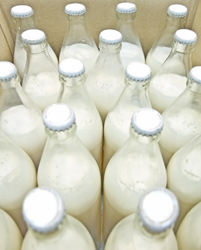Nutraceuticals for the sweet tooth
Fermented dairy foods rely on naturally occurring microbes to not only preserve the product but to give the taste the consumer demands. With biotechnology at their fingertips, microbiologists are able to either select naturally occurring mutants or modify these one-cell labourers. This way, food products can be made to order. Scientists with funding from the European project Nutra cells worked on improving fermented dairy products like yoghurt. The aim was to make this popular healthy dessert with much reduced lactose and increased glucose as a natural sweetener. The bacterium normally involved is Lactococcus lactis which, as the name suggests, ferments milk sugar (lactose) to give lactic acid, a preservative. Increasing the appetite of the bacterium for lactose successfully reduced the amount of lactose remaining in the food, ideal for the consumer with an intolerance for the sugar. The bacterium also uses glucose as an energy source and has all the necessary biochemical equipment for its breakdown. This means that any glucose present from the splitting of lactose into glucose and galactose will be used by the microbe. To increase glucose content, the researchers deleted three genes to block its metabolism. Techniques used to study the genes involved in the breakdown of the sugar included nuclear magnetic resonance (NMR) live in the cell and tracking radioactively labelled glucose. To complete the molecular picture, transcriptome analysis was then used to sequence the DNA and identify genes. Further development of this research lends itself to genetic modification and the production of other prototype bacteria to do the job. The food industry and the consumer both stand to benefit from tailor-made food which is not only healthy but potentially inexpensive to manufacture.




